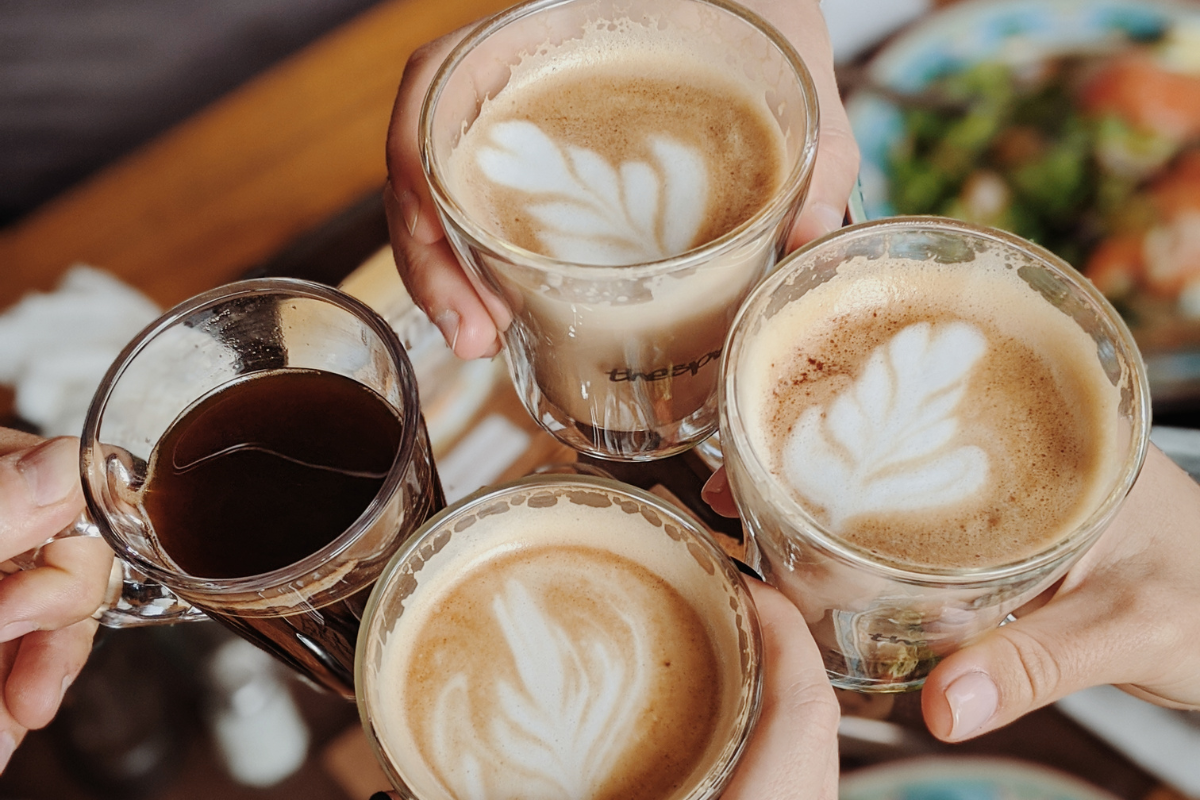Coffee is more than just a beverage; it is a global phenomenon, a social glue, and a cornerstone of countless cultures worldwide. From the bustling streets of Istanbul to the serene gardens of Kyoto, and from the vibrant plazas of Rome to the innovative cafes of Melbourne, coffee traditions are as diverse and captivating as the beans themselves. Every country, sometimes even every city, infuses its unique history, customs, and social norms into its coffee rituals, creating a rich tapestry of flavors, brewing methods, and communal experiences. To truly appreciate coffee is to embark on a journey that transcends borders, revealing the fascinating ways in which this humble bean shapes human connection and daily life across the globe.
Imagine sipping a strong, unfiltered brew from a tiny cup in a Moroccan market, steeped in centuries of tradition. Picture yourself enjoying a leisurely afternoon with an espresso in an Italian piazza, where coffee is an art form and a social catalyst. Envision the meticulous preparation of a pour-over in a minimalist Japanese café, reflecting a culture of precision and aesthetic beauty. These aren’t just different ways to drink coffee; they are windows into distinct cultural identities, each sip telling a story of history, community, and philosophy. Understanding these global coffee cultures enriches our own appreciation, transforming a simple drink into a passport for cultural exploration.
This article invites you on a captivating journey through coffee culture unveiled, exploring diverse traditions from around the world. We’ll delve into unique brewing methods, social rituals, and the distinctive characteristics of coffee consumption in various nations, highlighting how the bean has been woven into the fabric of daily life. From the ceremonial to the casual, prepare to discover the fascinating ways in which coffee connects people, shapes societies, and offers a truly global taste experience.
Europe: The Heartbeat of Coffee Tradition
Europe, particularly Italy, has profoundly influenced global coffee culture, defining many of the terms and practices we use today.
Italy: The Espresso Empire
- The Ritual: Coffee in Italy, almost exclusively espresso, is a fast, often standing-up affair. It’s a quick break, a social pause. The focus is on quality, consistency, and ritual.
- Key Terms:
- Espresso: The concentrated shot that is the base of everything.
- Cappuccino: A morning drink, never after noon, made with equal parts espresso, steamed milk, and foamed milk.
- Caffè Latte: More milk than foam, a common breakfast drink.
- Macchiato: Espresso “marked” with a dollop of foam.
- Social Aspect: Coffee bars (bars, not pubs) are social hubs where people gather throughout the day. It’s about quick conversation, a moment of connection.
- Why it’s Unique: The reverence for espresso as an art form, strict rules around consumption (e.g., no cappuccino after breakfast), and its integral role in daily social life.
France: Café Culture and Leisure
- The Ritual: While espresso is available, French coffee culture often revolves around the leisurely café au lait (coffee with hot milk) enjoyed with breakfast pastries. Cafes are places for conversation, people-watching, and extended relaxation.
- Key Drinks: Café au lait, often served in a large bowl.
- Social Aspect: The French cafe is a literary and philosophical institution, a place for lingering discussions and observation.
- Why it’s Unique: Emphasis on atmosphere, extended stays, and the integration of coffee with meals and intellectual pursuits.
Turkey & Greece: The Power of the Grind
- The Ritual: Turkish coffee (or Greek coffee) is an ancient method. Finely ground coffee (powder-fine) is boiled with water (and often sugar) in a small pot called a cezve or briki. It’s served unfiltered, with the grounds settling at the bottom of a small cup.
- Key Drinks: Turkish/Greek coffee, often enjoyed slowly, with fortune-telling from the leftover grounds common.
- Social Aspect: A symbol of hospitality, friendship, and conversation. It’s about sharing a moment, often accompanied by Turkish delights or small pastries.
- Why it’s Unique: The incredibly fine grind, unique brewing method (boiling), unfiltered nature, and the strong cultural ties to hospitality and divination.
Asia & The Middle East: Diverse Traditions
Coffee’s journey through Asia and the Middle East reveals a spectrum from ancient rituals to modern innovations.
Ethiopia: The Birthplace’s Ceremony
- The Ritual: Ethiopia is the birthplace of coffee, and its coffee ceremony (Buna Tetu) is a central part of cultural and social life. It’s a lengthy, intricate ritual often lasting hours, performed by women.
- Process: Green beans are ceremonially washed, roasted over an open flame, ground, and then brewed in a jebena (a traditional clay pot). It’s served in small cups, often with sugar or salt, in three rounds.
- Social Aspect: A significant event for hospitality, welcoming guests, and community gathering. It’s a symbol of respect and friendship.
- Why it’s Unique: The spiritual and communal significance, the active participation in every step from roasting to serving, and its deep historical roots.
Vietnam: Strong, Sweet, and Distinctive
- The Ritual: Vietnamese coffee is known for its bold flavor and unique preparation. It’s typically brewed using a phin (a small metal drip filter) directly into a glass.
- Key Drinks:
- Cà phê sữa đá: Iced coffee with condensed milk, notoriously strong and sweet.
- Cà phê đen đá: Iced black coffee.
- Egg Coffee (Cà Phê Trứng): A Hanoi specialty where a creamy, rich egg yolk mixture is whisked into a coffee, creating a dessert-like drink.
- Social Aspect: Often enjoyed outdoors on low stools, as a social lubricant for conversations with friends or business associates.
- Why it’s Unique: The reliance on robusta beans (stronger, more caffeine), the use of condensed milk (due to lack of fresh milk historically), and the slow drip of the phin.
Japan: Precision, Artistry, and Innovation
- The Ritual: Japanese coffee culture values precision, craftsmanship, and aesthetic beauty. While traditional tea ceremonies are paramount, coffee has been embraced with meticulous attention to detail.
- Key Brews: Pour over (especially Hario V60), Siphon, and Kissaten (traditional coffee houses focusing on slow brewing and immaculate service).
- Social Aspect: Coffee shops are often quiet spaces for contemplation, work, or small, intimate conversations. Service is impeccable.
- Why it’s Unique: The emphasis on brewing as an art form, meticulous attention to every detail (grind, water temperature, pouring technique), and the deep appreciation for subtle nuances in flavor.
The Americas: Evolution and Innovation
Coffee’s journey to the Americas transformed it into a global commodity, but also birthed new cultural expressions.
The United States: Convenience and Specialization
- The Ritual: Historically, American coffee culture revolved around large-batch, convenient drip coffee, often consumed for utility rather than sensory pleasure.
- The Rise of Specialty: In recent decades, the U.S. has been at the forefront of the “Third Wave Coffee” movement. This involves valuing single origin beans, precise roasting, and detailed brewing methods (like pour over, AeroPress, espresso).
- Key Drinks: Diverse range from black drip coffee to elaborate espresso-based drinks (lattes, cappuccinos, Americanos) with various syrups and milks.
- Social Aspect: Coffee shops are versatile spaces for work, casual meetings, or social gatherings. The drive-thru coffee stand is also a uniquely American phenomenon.
- Why it’s Unique: Its evolution from a utilitarian beverage to a highly specialized craft, fostering innovation in brewing and a strong café culture.
Latin America (General): The Producer’s Perspective
- The Ritual: In many Latin American producing countries, coffee is primarily an agricultural product, but also a daily staple. Farmers often drink coffee brewed simply (e.g., using a colador or cloth filter) with sugar.
- Social Aspect: Coffee is a part of family life, hospitality, and daily sustenance for those who grow it. It’s often enjoyed sweet and hot.
- Why it’s Unique: The direct connection to the source of the bean, and a culture where coffee is both a livelihood and a daily comfort.
- Example (Brazil): A “cafezinho” (small coffee) is a ubiquitous sign of hospitality, often strong, sweet, and served as a quick pick-me-up throughout the day.
Australia & New Zealand: The Modern Cafe Revolution
These nations, particularly Melbourne and Wellington, are considered pioneers in modern cafe culture.
- The Ritual: Strong emphasis on high-quality espresso and milk-based drinks. Baristas are highly skilled and respected professionals. The focus is on consistent, expertly crafted coffee.
- Key Drinks: The Flat White (a signature drink, often credited to this region, known for its velvety microfoam), expertly made lattes, cappuccinos, and precise espresso.
- Social Aspect: Cafes are central to urban life, hubs for socializing, business meetings, and casual dining. Brunch culture is deeply tied to the cafe scene.
- Why it’s Unique: Their innovation in espresso techniques, the rise of the barista as a skilled artisan, and the creation of a vibrant, quality-driven cafe culture that has influenced the rest of the world.
The Global Tapestry of Coffee
Coffee culture unveiled reveals a mesmerizing world of traditions, rituals, and tastes, each a unique reflection of its people and place. From the ceremonial reverence in Ethiopia to the bustling espresso bars of Italy, the tranquil contemplation in Japan, and the innovative café scene of Australia, coffee adapts, inspires, and connects. It’s a powerful testament to how a single plant can become so deeply embedded in human life, transcending its simple function as a beverage to become a symbol of hospitality, community, artistry, and daily routine.
By exploring these diverse global coffee cultures, we not only broaden our understanding of coffee itself but also gain a richer appreciation for the intricate beauty of human tradition. So, the next time you sip your coffee, consider its journey, both from the farm to your cup, and across the continents, recognizing that with every brew, you’re participating in a truly global, living tradition.

